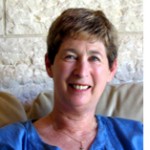By Dorothea Shefer-Vanson

MEVASSERET ZION, Israel — Verdi’s Requiem is not often performed in Israel. It requires a massive choir, an accomplished and enormous orchestra with augmented brass section, and four top-flight vocal soloists. In addition, it should be performed in an auditorium that can cope with the wide range of volume, tone and timbre that this work requires.
So it was with certain reservations that we ventured as far afield as Herzliya (just one hour’s drive away from our home near Jerusalem) to attend a performance given by our own native Jerusalem Symphony Orchestra with local choirs and soloists whose names were not familiar to us from any of the many concerts we have attended in Jerusalem.
Before the concert began, the conductor, Amos Talmon (another name with which we were not familiar) gave a brief talk. He briefly mentioned the circumstances of the work’s composition, arising from the attempt by Verdi to organize a joint homage to Rossini by the most prominent composers of Italy in the late nineteenth century.
Early in his talk Maestro Talmon aroused our curiosity by mentioning the unique Jewish and Israeli aspect of the Requiem. He described the first performance of the work in Israel in 1954, when the Israel Philharmonic Orchestra played it in Tel Aviv, in the open air of the grounds of one of its public buildings, and conducted by the Hungarian, Ferenc Fricsay. Although the soloists sang in the original Latin of the mass, the choir sang a Hebrew version of the words, in keeping with the spirit of the times and the patriotic and ambivalent attitude towards Christian religious texts.. The event attracted attention throughout the country, the concert was sold out and those denizens of Tel Aviv who were unable to buy tickets climbed into the nearby trees to enjoy the music. Talmon noted that many ministers and senior officials attended the concert, and wondered whether this would also have been the case with the present government.
As for the Jewish connection with Verdi’s Requiem, that referred to its performance under the direction of Raphael Schechter by inmates of the Theresienstadt concentration camp in 1944. When asked why they were performing for audiences which included members of the S.S. as well as other inmates, Schechter said that they were sending a message of defiance to the Nazis that they were unable to express directly in words. And although most of those who participated in the performance in Theresienstadt, including Schechter, were sent to Auschwitz and murdered, that particular performance of the Requiem lives on in the book, The Theresienstadt Requiem, by Josef Bor and the Defiant Requiem Foundation established by American musician Murry Sidlin and dedicated to commemorative performances of the Requiem combined with filmed interviews with survivors who took part in the original performance in the concentration camp. We attended the performance of the work given in Israel a few years ago and it was truly a moving experience.
For me, the work has special significance, having been one of my late father’s favourite works. It was my task on Sundays in our home in London to play and change the records on our gramophone, so that my father could work in peace at his desk while enjoying the music. Those were the days of 33 rpm vinyl records, which some people claim give the best quality sound. I can’t judge, but there’s no doubt that modern technology has produced more convenient ways of listening to music.
I also remember a performance given a few years ago in Eilat, by the Mariinsky orchestra led by maestro Valery Gergiev in the huge marquee erected in the port area for the event. The noise of the air-conditioning system almost drowned out the sound of the orchestra, especially at the beginning, when the orchestra plays pianissimo. The performance had just begun when from somewhere in the audience the ringtone of a mobile phone rang out, shattering the mood of quiet contemplation with which the piece begins. Gergiev stopped the orchestra, waited a moment or two, then started again from the beginning. That was a moment of shame and embarrassment for everyone in the audience.
But to return to Herzliya in June 2015. The combined Emek Hefer and Yoav choirs, numbering over one hundred souls and led by Shimon Levtov, produced an impressive sound, and each of the four soloists was astonishingly good. But special mention must be made of the bass, Yoram Chaiter, whose deep and resonant voice was of a quality that is rarely heard in Israel. From the programme notes we learned that he is originally from the Ukraine and in addition to his vocal career he is also a physician and cancer researcher. The conductor, Amos Talmon, did an excellent job of keeping the tempo flowing, and the orchestra responded to his leadership with its customary professionalism. Again, special mention should be made of the two timpanists, who play an important role throughout the work, but especially in the Dies Irae, where their contribution is particularly significant. It was even an aesthetic pleasure to see the young lady timpanist (sorry, I don’t have her name) wielding the drum-stick with intense energy as she banged on the big bass drum to produce the ear-shattering and spine-chilling drum-beats signifying the terror of the day of wrath and awe.
All in all, it was an impressive performance of a much-loved work, and one that will remain in our memories for a long time to come.
*
Shefer-Vanson is an author and freelance writer based in the Jerusalem suburb of Mevasseret Zion, Israel. You may comment to her at dorothea.shefer@sdjewishworld.com or post your comment on this website provided that the comment is civil and that it is followed by your full name and city and state of residence.